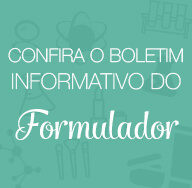Testes baseados em células promete ser alternativa para a experimentação animal
Categoria: Novas Tecnologias
Scientists in the United States published first results for a faster, more efficient way of gauging the toxicity of chemicals, which may reduce the need for animal testing. Using human cells in Petri dishes in the lab, they tested about 10,000 different types of chemical compounds including pesticides, industrial chemicals, food additives and drugs. The results were used to build models to “predict” whether the compounds, or combinations of them, may be harmful to humans or the environment when used in new drugs or environmental chemicals. The project, dubbed Tox21, is a joint effort involving three US federal agencies: the Environmental Protection Agency, the National Institutes of Health (NIH) and the Food and Drug Administration (FDA).
“Thousands of chemicals to which humans are exposed have inadequate data on which to predict their potential for toxicological effects,” the study authors wrote in the journal Nature Communications. [1] However, traditional toxicity tests using animals are expensive and species differences mean they do not always accurately predict a chemical’s effect on humans. Animal tests also raise ethical concerns about animal welfare. “An important goal of the US Tox21 program is to use in vitro data as surrogates for in vivo toxicity to reduce animal testing,” study co-author Ruili Huang of the NIH told AFP. But to achieve this, cell tests have to be just as predictive, or more so, of human toxicity as animal tests.
After testing about 10,000 compounds, each in 15 different concentrations and on different cells, the team used their database to build predictive models for new chemical combinations.
“Compound clustering by structure similarity and activity profile similarity across the assays reveals structure-activity relationships that are useful for the generation of mechanistic hypotheses,” explain the researchers who applied structural information and activity data to build predictive models for 72 in vivo toxicity end points.
Researchers found that their models could predict toxicity for both humans and animals. “Models based on in vitro assay data perform better in predicting human toxicity end points than animal toxicity, while a combination of structural and activity data results in better models than using structure or activity data alone. Our results suggest that in vitro activity profiles can be applied as signatures of compound mechanism of toxicity and used in prioritization for more in-depth toxicological testing.”
These models may be “a promising alternative to traditional animal toxicology studies.” However, further work must be done to validate and improve the models, which Huang said may never completely replace animal testing. It may, however, allow scientists to prioritise chemicals predicted to be most likely toxic for further tests using traditional methods, and so “significantly reduce the amount of animal tests required,” he said.
Animal activists have welcomed the research. “To understand more about human development and human diseases, the world’s most forward thinking scientists are developing and implementing methods that supersede the crude use of animals,” Julia Baines, science policy advisor of the organisation People for the Ethical Treatment of Animals (PETA) told AFP. “PETA welcomes the wealth of advanced non-animal research methodologies that are creating a brighter future for animals and human health.”
Premium Beauty News, (01/02/2016)








